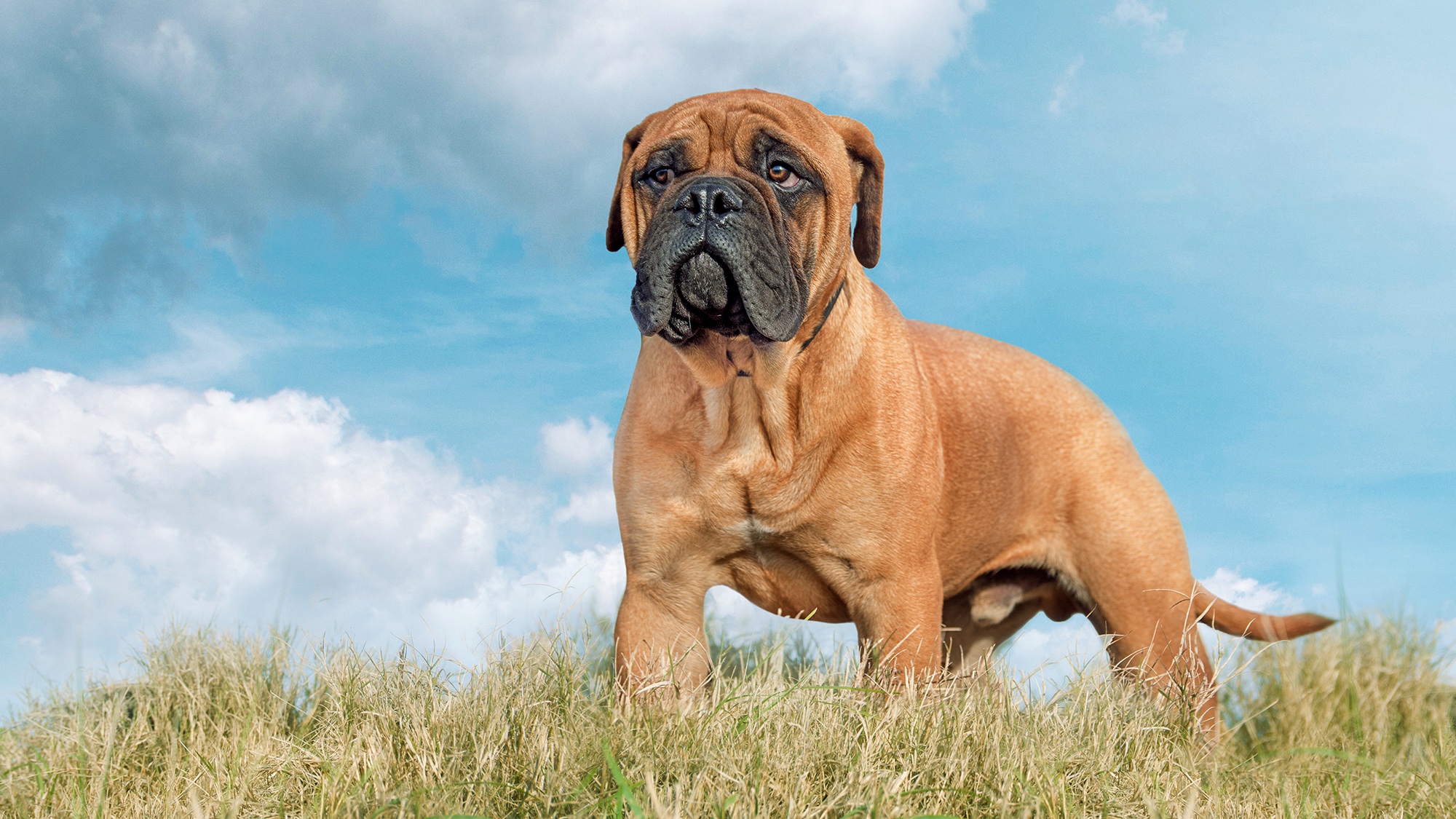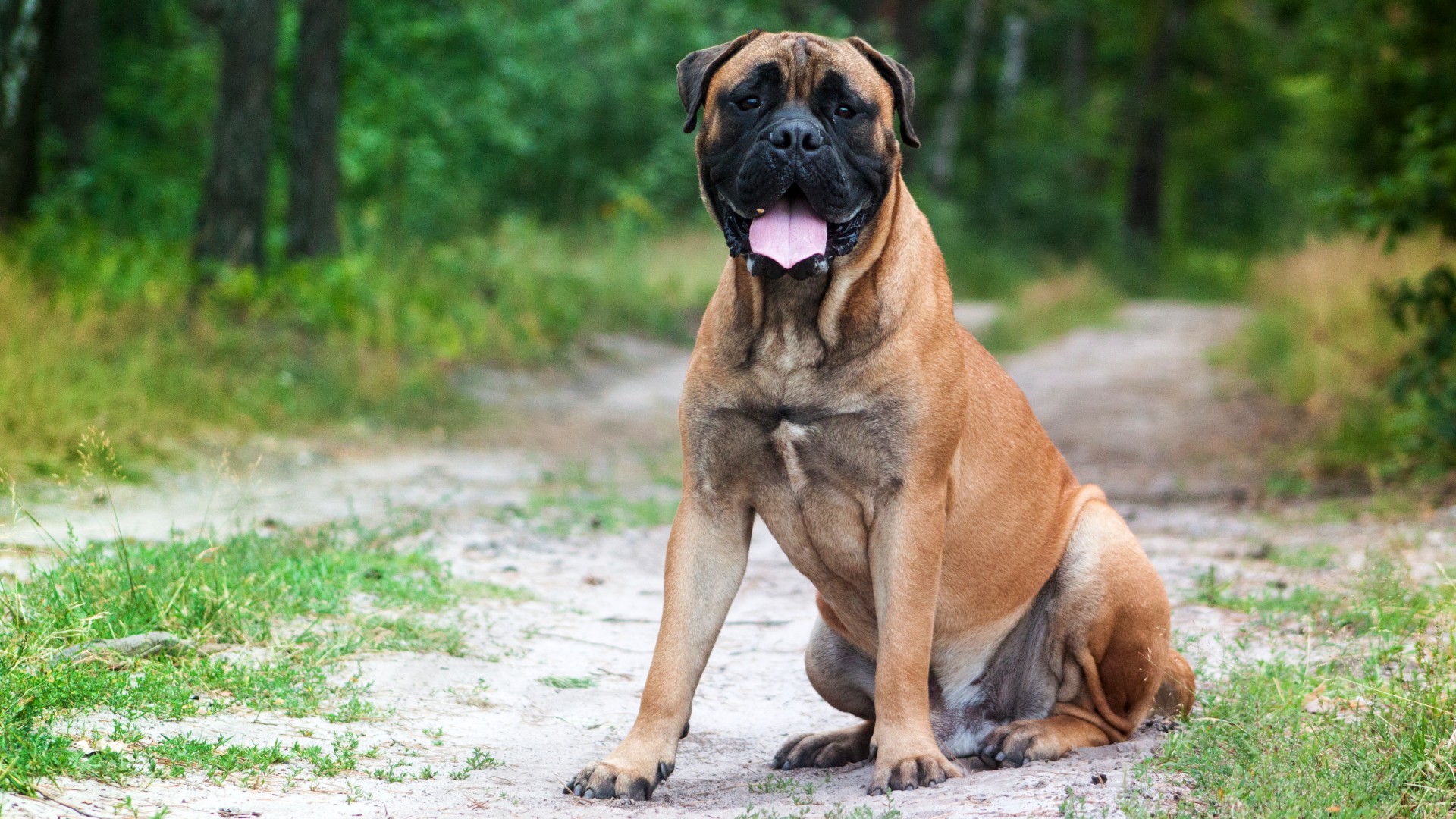How much does it cost to own a Bullmastiff?
Pondering the question 'how much does it cost to own a Bullmastiff?' We give you the rundown on food, training and medical expenses

The question “how much does it cost to own a Bullmastiff?” is a common one amongst pet parents-to-be who are looking for a dog who is both a world-class protector and an affectionate family companion.
Known for being intelligent, loyal and brave, the Bullmastiff is becoming increasingly more sought-after, coming in at a respectable 55 out of 195 recognized dog breeds in terms of popularity.
And yet owning a Bullmastiff is not for the faint of heart, with these dogs often being wilful, dominant, and with an independent streak that can make them a challenge to raise and train.
That being said, if you’re a confident owner who is able to assert yourself and make it clear to your Bullmastiff that you’re the leader of the pack, this powerful dog will be the most courageous and devoted companion.
As you’ve probably guessed from their size and their reputation as outstanding guard dogs and protectors, these dogs aren’t the cheapest breed to own. But for many people, their generally calm, easy-going and gentle natures make them well worth every penny.
Let’s take a closer look at how much it costs to own a Bullmastiff, including the price of Bullmastiff puppies and what you can expect to pay for food, supplies, training and medical costs.
Bullmastiff price for puppies
If you’re in the market for a Bullmastiff, expect to pay between $1,000 - $2,000 for a puppy, with the average cost coming in at around $1,500. However, it’s not unusual for purebred Bullmastiff puppies from high-quality parents to fetch around $3,000.
Whether a puppy is purebred or mixed is the factor most likely to affect the price, but there are a few other things worth bearing in mind too. The parents' bloodline and the breeder’s reputation can both drive the cost up and if your puppy has already begun being trained and socialized, this can also affect the price.
It’s also not unusual for reputable breeders to take their Bullmastiff puppies to the vet for physical examinations, deworming and vaccines before they put them up for sale. While this again drives the price up, it’s well worth it when you consider the costs of getting an unhealthy Bullmastiff.
Some pet parents also look for unusual colors or rare markings and what’s in trend will change from year to year. If you’re looking for a dog that’s a little more unusual, then it’s likely your unique Bullmastiff puppy will cost you a bit more than if you were to just opt for a standard puppy.
If the thought of parting with anywhere from $1,000 to $3,000 is leaving you and your wallet feeling a little queasy, don’t forget about animal shelters. It’s not unusual for Bullmastiffs to be surrendered by inexperienced pet parents who didn’t understand the amount of training and socialization these dogs need or the impact they would have on their lifestyle. Adopting a Bullmastiff is a great way to welcome one of these pups into your family without the huge price tag.
How much does it cost to own a Bullmastiff: Food and supplies
We wish we could tell you that the cost of owning a Bullmastiff ends after you’ve purchased your puppy and brought them home, but as you’ve probably already guessed, when it comes to opening that wallet, you’re only just getting started!
Here's a list of items you’ll want to factor into your budget that your new Bullmastiff is going to need:
- A leash and harness
- One of the best flea collars for dogs or another form of flea treatment
- Food and water bowls
- The best large dog bed so they have plenty of space to spread out
- A crate
- Plenty of the best dog food
- A grooming kit
- Toys
When it comes to food, we know we’re stating the obvious when we say that bigger breeds are going to cost more to feed than smaller breeds and that’s definitely true with the Bullmastiff.
A diet of either the best dry dog food or the best wet dog food will make sure they get all the vitamins, minerals and antioxidants they need to thrive, and depending on which brand you opt for, you’ll be looking at annual costs of between $300 and $600 to keep your furkid feeling full.
While the first year will be the most expensive supply-wise, it’s important to factor in ongoing costs as items such as the best dog toys will require replacing every year or perhaps every few months, depending on how heavy a chewer your Bullmastiff is! We recommend an annual budget of between $200 - $400 to cover the cost of replacement items.
How much does it cost to own a Bullmastiff: Training and socialization

Because Bullmastiffs are large, high-energy dogs with natural protection and guarding instincts, training and socialization from a young age is strongly recommended.
Professional dog trainer and animal behaviorist, Dr. Alexa Diaz, suggests a mixture of private training for house manners as well as group training sessions to help your Bullmastiff become more obedient and comfortable around other people.
For a breed like the Bullmastiff, seven to nine private lessons are recommended, at a total cost of between $900 - $1,200. On top of this, you’ll want them to attend around five group sessions, which usually last for an hour and cost $200 all up.
That means that all in all, you’ll be looking to spend an average of $1,100 on training and socialization for your Bullmastiff. Not cheap we know, but with a dog that has a tendency to be strong-willed, it’s well worth it!
How much does it cost to own a Bullmastiff: Medical expenses
In the first year of your Bullmastiff's life, expect to spend around $650 on medical expenses. Vet’s typically recommend three visits in the first 12 months to cover physical examinations, essential vaccinations, doses of flea and heartworm prevention and a fecal examination.
You may also wish to have your Bullmastiff spayed/neutered in the first year of their life and this will cost around $200 - $500 depending on the vet clinic that you visit. Most vets will also advise that your Bullmastiff undergoes a gastropexy procedure at the same time which will help prevent gastric dilatation and volvulus as your puppy grows into an adult. This will generally cost between $200 - $400, so if you choose to add on these two additional procedures, it’s possible that you will be spending an additional $400 - $900 on top of the $650 mentioned earlier.
As your Bullmastiff becomes an adult, annual expenses will rise to between $700 - $800. This is because the Bullmastiff is a big breed and their additional size drives up the cost of medication.
The Bullmastiff is also at risk for the following health complications:
- Hip dysplasia
- Elbow dysplasia
- Cranial cruciate ligament rupture
- Hypothyroidism
- Entropion
- Gastric dilatation and volvulus (GDV)
Treatment costs for these conditions vary with most sitting somewhere between $1,500 - $3,000, although in the case of hip dysplasia, a total hip replacement can cost as much as $6,500. We recommend you consider investing in the best pet insurance to help you cover the costs of any medical treatment your Bullmastiff might need.
Why are Bullmastiffs so expensive?
It’s true that the Bullmastiff is not a cheap breed to own and this is largely due to their size. Bigger breeds obviously have bigger appetites and need more food to fuel their days, but it’s not just their food intake that drives the cost up.
Larger breeds tend to have more health problems than smaller breeds, particularly issues with their joints, and deep-chested dogs like the Bullmastiff are also at a much higher risk for life-threatening GDV.
And yet, if your budget can stretch that little bit further, the Bullmastiff will pay you back ten-fold, gifting you a calm, protective, devoted and courageous canine that will make a loving and loyal companion.
Read next: Bullmastiff facts you’ve not heard before
PetsRadar Newsletter
Get the best advice, tips and top tech for your beloved Pets

Kathryn is a freelance writer who has been a member of the PetsRadar family since it launched in 2020. Highly experienced in her field, she's driven by a desire to provide pet parents with accurate, timely, and informative content that enables them to provide their fur friends with everything they need to thrive. Kathryn works closely with vets and trainers to ensure all articles offer the most up-to-date information across a range of pet-related fields, from insights into health and behavior issues to tips on products and training. When she’s not busy crafting the perfect sentence for her features, buying guides and news pieces, she can be found hanging out with her family (which includes one super sassy cat), drinking copious amounts of Jasmine tea and reading all the books.